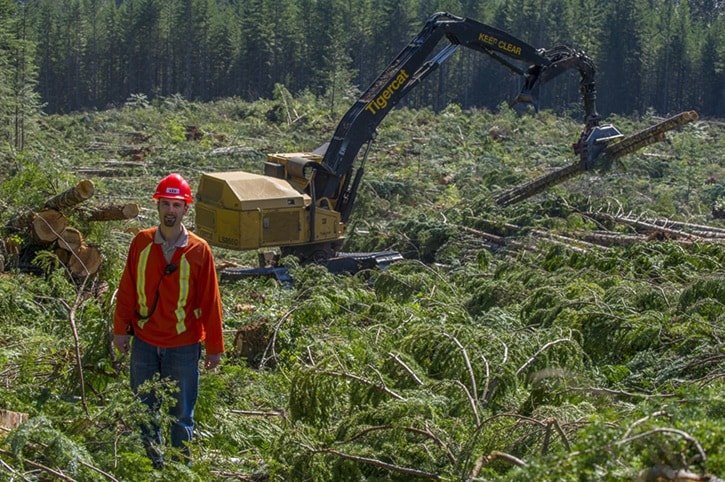This is the second in a three-part series about sustainable use in the Comox Lake Watershed.
The Proposal for a Comox Lake Watershed Sustainable Use Recreation Area suggests land-use designations need to change to eliminate large-scale logging in the watershed.
Private forest companies own about 65 per cent of watershed lands, which are open to the international market. TimberWest owns 60 per cent.
The Comox Valley Conservation Strategy Community Partnership, which penned the proposal, foresees the long-term importance of a community-owned watershed. Options could include buying the land, or making an arrangement where TimberWest is compensated for harvesting.
"They could have some long-term revenue streams out of the watershed and still own it, but they just couldn't do what they've been doing," project manager David Stapley said. "There would have to be some kind of economic compensation for that."
That would require negotiations with a willing partner, he added.
"We see it as an opportunity," Stapley said. "What's going to happen in the long run with climate change? We've got to think long-term."
The partnership condones selective logging but says clear-cut, industrial-scale logging in the watershed causes turbidity.
"Small-scale, ecologically based logging could occur in the watershed, but it has to be done in ecologically sound forest practices," Stapley said.
"We do selective harvesting," said Domenico Iannidinardo, chief forester at TimberWest. "The forest regeneration is not going to be compromised, because Douglas fir trees need sun to regenerate.
“It's very difficult to regenerate a stand in most places in the Comox watershed without some form of clear-cutting. We plant trees right away and they need sunshine right away, or invasive species and other non-desirable species take over and start to devalue the forest ecosystem."
Iannidinardo noted a safety element in the steep terrain of the watershed, where it can be dangerous to selectively harvest — hence the importance of allowing an opportunity for clear-cutting or open-stand harvesting.
He feels a lighter disturbance means a bigger footprint.
"With selective harvesting it's necessary to build more roads and maintain a larger active road network. And it's active roads that are the biggest risk for turbidity," Iannidinardo said.
"We leave big reserves around streams now (compared to the first half of the 20th century). Now we leave buffers, we have geotechnical and biologists, all part of our planning.
“We deactivate roads but we're not using them … These reduce the risk of sedimentation."
Jack Minard, executive director of the Comox Valley Land Trust, said TimberWest is managing its product, but the partnership is concerned with managing long-term ecosystem health.
He agrees that, if clear-cutting, the company can put in a merchantable species. However, inside the drinking watershed, logging poses threats.
"It's not just logging, and it's not all logging, it's just one of those potentials," Minard said. "It's likely the road building, the trucks coming and going. These are the biggest threats.
“Why do it in our drinking watershed? It's the modern day and age. People are eliminating these things from drinking sheds all over the world, and the only reason we're not doing it is because we have profit-managed forests."
He noted TimberWest has offered a roundtable discussion, but resources are a problem for the partnership.
"Water quality is an integral part of our forest planning process," said Iannidinardo, noting TimberWest staff includes a water quality technologist. Hazard assessments include monitoring for turbidity in active areas and over the long-term.
The company also believes harvesting one area at a time is better for animals in terms of not interrupting the stages of their lifecycle.
See Thursday's Comox Valley Record for the third and final part of the series, which looks at managing public access in the Comox watershed.
